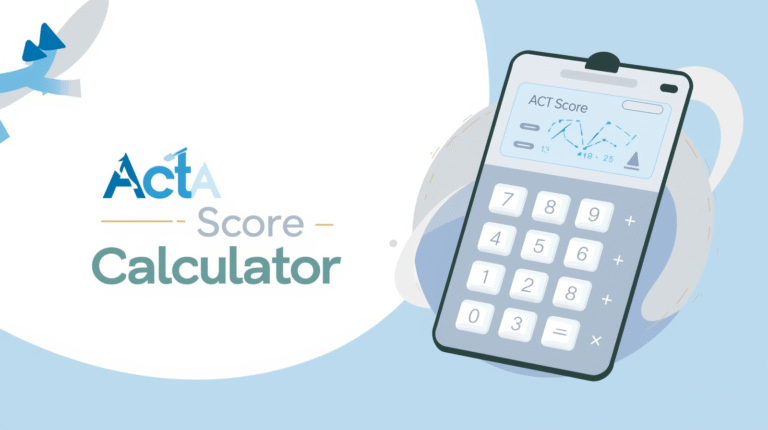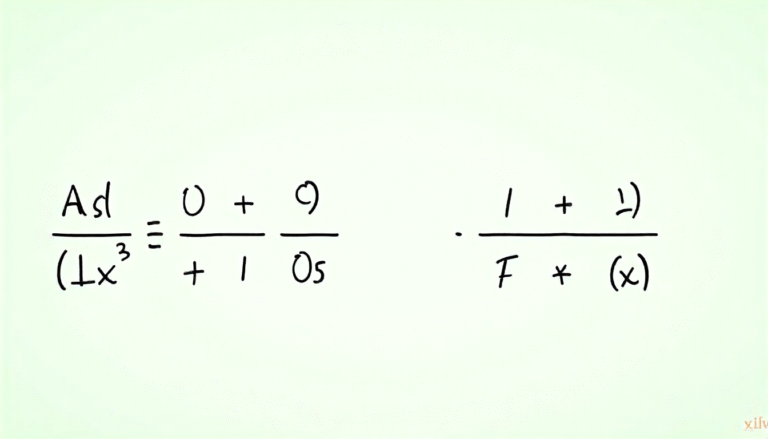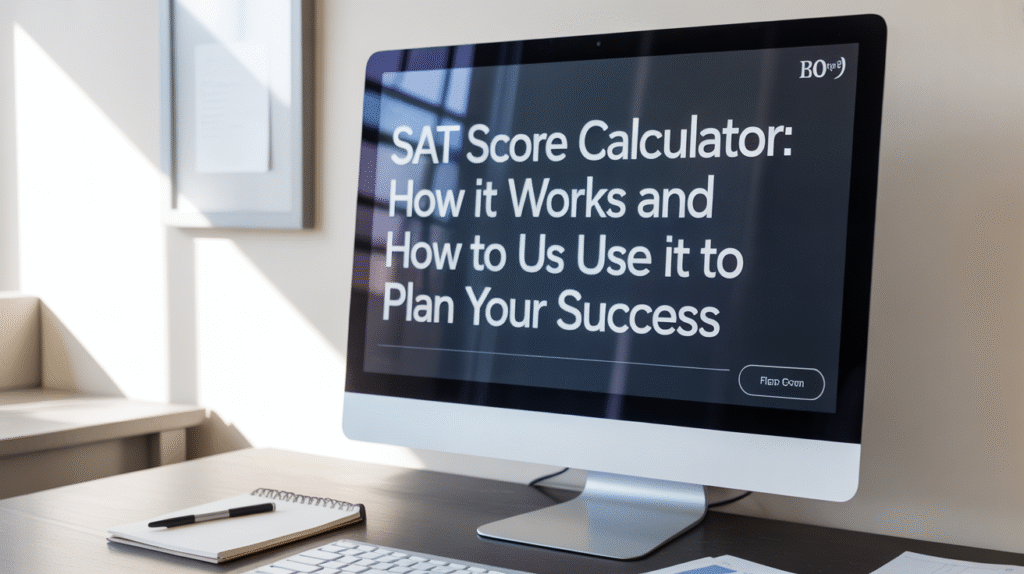
If you’re getting ready for the SAT, you’ve probably heard the term SAT score calculator more than once. It sounds fancy, but don’t worry—it’s actually super simple. An SAT score calculator is a tool that helps you estimate your final SAT score based on your practice test results. It tells you how your correct answers might translate into a real SAT score, giving you a clear idea of where you stand before test day.
Knowing how to use a SAT score calculator can make a big difference in your study plan. It can show you which sections you’re strong in and where you need to improve. In this guide, we’ll go over everything you need to know—from how the SAT is scored to how to use calculators effectively and boost your confidence before test day.
Table of Contents
What Is an SAT Score Calculator?
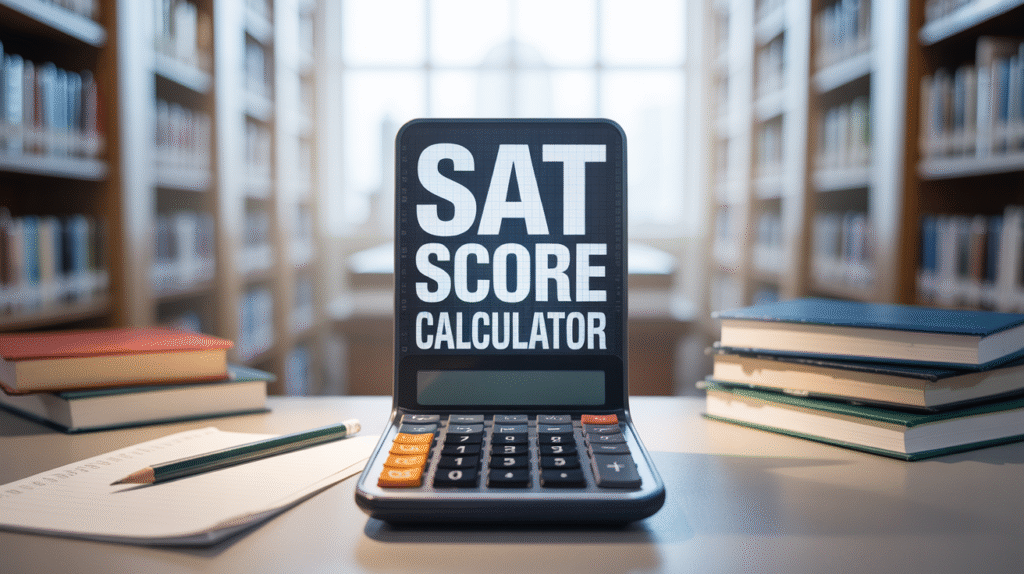
An SAT score calculator is an online tool that estimates your final SAT score using the number of correct answers from your practice test. It converts your raw score (the total number of questions you answered correctly) into a scaled score, which ranges from 400 to 1600.
Most calculators break down your performance by section: Reading, Writing and Language, and Math. Once you enter how many questions you got right in each section, the calculator gives you an estimated SAT score. This estimate helps you understand your progress and predict your possible test-day results.
Many prep sites, like Khan Academy or College Board partners, provide free calculators. These are very close to the real scoring system and can give you a clear picture of your potential performance.
Why Is the SAT Score Calculator Important?
Using a SAT score calculator isn’t just about guessing your score—it’s about learning from your mistakes. Every practice test is an opportunity to see where you can improve. By calculating your score, you can figure out which subjects are your strengths and which ones need more work.
Let’s say your Reading and Writing scores are high, but your Math score is low. The calculator makes that crystal clear. That means you can focus more on Math in your study schedule instead of reviewing everything equally. This saves time and helps you study smarter, not harder.
Having a clear estimate also boosts confidence. When you see your scores improving after each practice test, you’ll feel more prepared for the real exam.
How the SAT Scoring System Works
Before using an SAT score calculator, it’s helpful to know how the SAT is scored. The SAT has two main sections: Evidence-Based Reading and Writing (EBRW) and Math. Each section is scored between 200 and 800 points, making a total maximum score of 1600.
Each correct answer on your test gives you one raw point. There’s no penalty for wrong answers—so it’s always worth guessing if you’re unsure. Once you have your raw score for each section, it’s converted into a scaled score using a special formula that adjusts for test difficulty.
This scaled score conversion can change slightly from one test to another, which is why a SAT score calculator is so helpful—it uses past data to predict your most likely score.
Breaking Down the SAT Sections
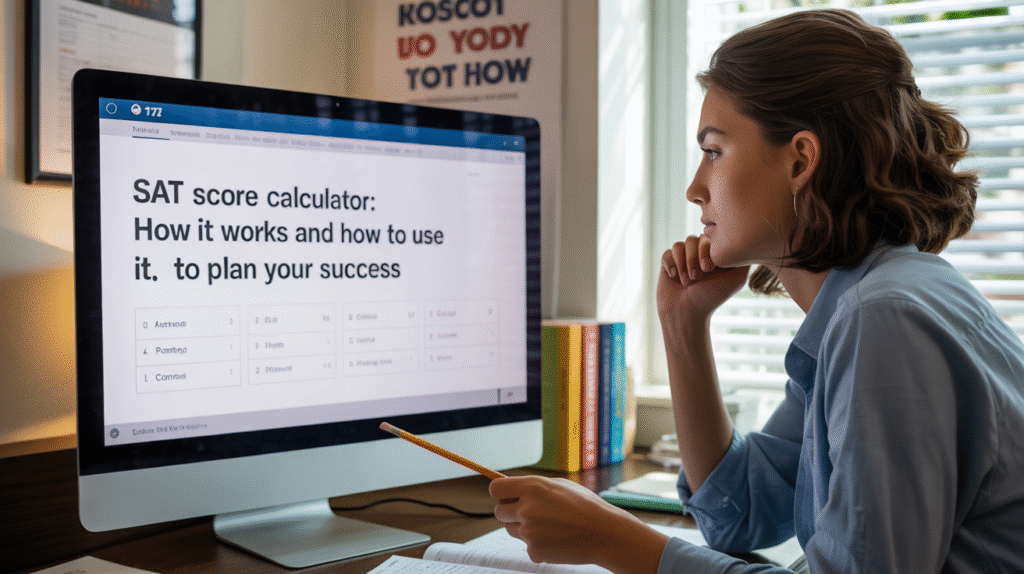
The SAT has two main parts, each with its own challenges:
- Evidence-Based Reading and Writing (EBRW) – This includes Reading and Writing and Language. It checks how well you understand written passages, grammar, and word usage.
- Math – This includes two parts: one where you can use a calculator and one where you can’t. It tests algebra, problem-solving, and data analysis.
When using a SAT score calculator, you’ll enter your correct answers from each of these parts. The calculator will then show your section scores and total composite score.
Understanding how each part contributes helps you target your study time wisely. For example, improving your Writing section by just a few correct answers can sometimes raise your total score by 40–60 points!
How to Use a SAT Score Calculator Step-by-Step
Here’s how you can use a SAT score calculator easily:
- Take a full-length practice test under real test conditions.
- Check your answers using the official answer key or scoring guide.
- Count how many questions you got right in each section—Reading, Writing, and Math.
- Enter your results into the calculator.
- View your estimated score and analyze the results.
Some calculators also show section-by-section breakdowns, percentile ranks, and advice on how to improve your score. Using these tools regularly helps you track your progress over time.
How Accurate Are SAT Score Calculators?

A good SAT score calculator is usually very accurate, especially when it’s based on official College Board scoring tables. Most students find their actual SAT score to be within 30–50 points of their calculator estimate.
However, no calculator is perfect. The SAT sometimes changes its scoring slightly depending on how difficult the test is. For example, a harder test might allow a few more mistakes for the same score. Still, these calculators give an excellent prediction that’s close enough to help you plan effectively.
To get the most accurate results, always use calculators from trusted sources like College Board, Khan Academy, or well-known prep sites.
Benefits of Using an SAT Score Calculator
There are many reasons to make a SAT score calculator part of your prep routine:
- Instant feedback: You get quick results after every practice test.
- Smart study planning: You can see exactly which subjects need more attention.
- Motivation: Watching your estimated score rise keeps you encouraged.
- Goal setting: It helps you set a realistic target score based on your dream college.
I’ve seen many students improve faster once they start tracking their progress. Instead of studying blindly, they use the calculator to measure growth, making every practice session more purposeful.
How to Improve Your Score After Using a Calculator
Once you’ve used a SAT score calculator and know your score, the next step is improvement. Start by reviewing every wrong answer carefully. Figure out why you missed it—was it a silly mistake, a time issue, or a topic you didn’t understand?
Next, make a study plan that focuses on your weak areas. Use practice books, online lessons, or tutoring sessions to strengthen those skills.
Finally, take another full practice test after a week or two and calculate your new score. Watching your score rise will motivate you to keep going!
Common Mistakes Students Make When Using a Score Calculator
Even though a SAT score calculator is simple to use, some students make mistakes that affect their results. Here are a few:
- Entering wrong answer counts – Double-check your correct answers before entering them.
- Using an outdated calculator – Always use recent scoring charts.
- Ignoring section analysis – Don’t just look at your total score; study each section carefully.
- Relying too much on calculators – Use them as a guide, not as your only study tool.
Remember, the calculator is a helper—it shows your progress, but real improvement comes from steady, focused practice.
Top Free SAT Score Calculators You Can Try
There are several reliable tools online you can use today:
- College Board Score Converter – The most official and accurate.
- Khan Academy SAT Calculator – Great for practice test analysis.
- PrepScholar SAT Score Estimator – Includes helpful feedback.
- Magoosh SAT Score Predictor – Simple and fast to use.
- Kaplan Score Estimator – Trusted by many students and teachers.
Each of these calculators provides quick estimates, detailed analysis, and helpful study tips. Try a few to see which one you like best!
How Your SAT Score Impacts College Admissions
Your SAT score can play a big role in college admissions. Many schools still consider it an important part of your application. Using a SAT score calculator early in your prep helps you set a target score that matches your dream college’s average range.
For example, if your goal school’s average score is 1350 and your calculator shows 1200, you know you need to raise your score by 150 points. This clear target makes your study time more focused and effective.
FAQs About the SAT Score Calculator
1. Is the SAT score calculator the same as the real SAT scoring?
Not exactly, but it’s very close. The SAT score calculator uses past scoring tables to estimate your real score. The actual SAT may vary slightly depending on test difficulty.
2. How many times should I use a score calculator?
You can use it after every full-length practice test. Most students use a SAT score calculator once or twice a week during prep season.
3. Can I calculate my score manually without a calculator?
Yes! You can use the official scoring tables from the College Board. Just count your correct answers and match them to the charts. However, using an online calculator saves time.
4. Do colleges see your calculator score?
No. The SAT score calculator is just for your personal use. Colleges only see your official SAT scores sent by the College Board.
5. What’s a good SAT score?
A “good” score depends on your goals. For many colleges, 1200+ is solid, while top schools look for 1400 or higher.
6. Can I use a calculator during the SAT?
Yes, but only for the Math section that allows it. This is different from the SAT score calculator, which you use after the test to estimate your total score.
Conclusion: Take Control of Your SAT Journey
The SAT score calculator is more than a simple number tool—it’s your personal guide to success. It helps you understand where you are, what you need to work on, and how close you are to your goal score.
By using it regularly, studying smartly, and tracking your growth, you’ll walk into test day feeling prepared and confident. Remember, every point counts, and small improvements add up.
So, grab your latest practice test, open a SAT score calculator, and start measuring your progress today. Each calculation brings you one step closer to your dream college!

